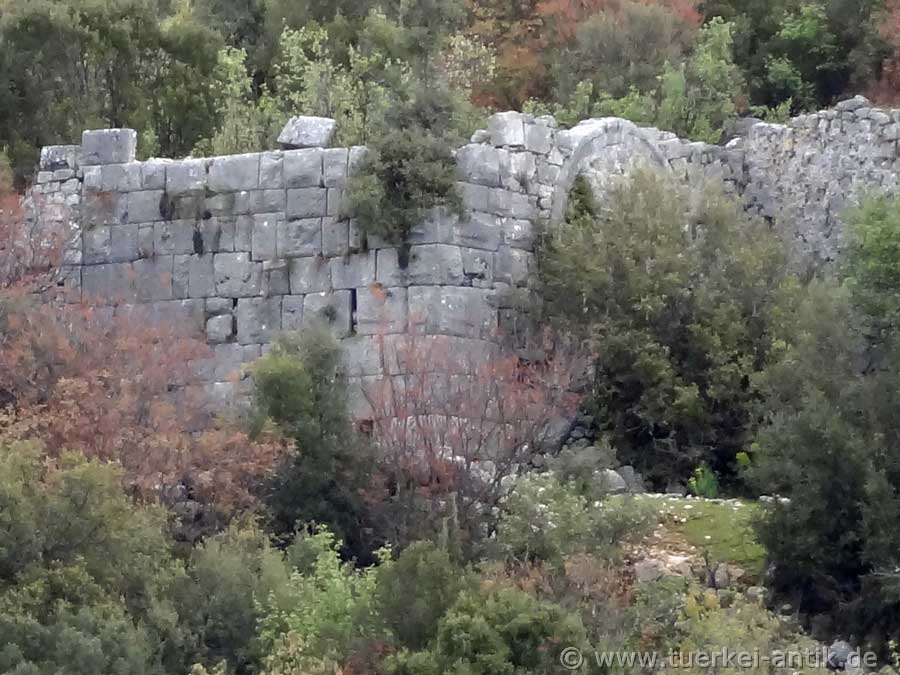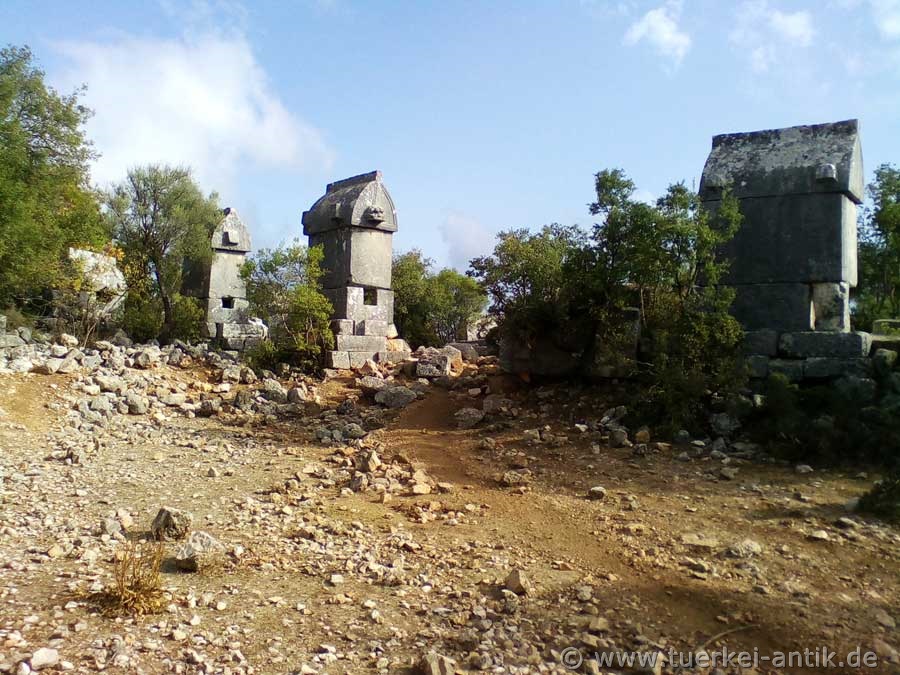 |
| Kyaneai | |||
 |
|
||
| The city wall, in the middle the western city gate | |||
|
The ruins of Kyaneai lie on a hill above the village of Yavu on a ridge. The city walls and theatres date from early Hellenistic times, most of the other remains from the Roman imperial period. The place existed already in archaic and classical times. The Lycian name of Kyaneai was probably Khbahñ, a place name mentioned on the inscription pillar of Xanthos. |
|||
|
|
|||
| The lower Agora | |||
|
Kyaneai became the most important settlement in the Yavu Mountains. The ancient written sources barely mention Kyaneai, but according to the identification of its coins, inscriptions and archaeological remains it was an important polis. It belonged to the Lycian League after 168 B.C. and became part of the Roman province of Lycia et Pamphylia during the imperial period. There are coins from the time of the Lycian League up to Gordian III. In late antiquity and Byzantine times, Kyaneai was the seat of a bishop who was subordinate to the Metropolitan of Myra. Kyaneai probably existed until the beginning of the 13th century. |
|||
|
|
|||
| The Theatre | |||
|
The Hellenistic theatre of the ancient city of Kyaneai was built on a natural slope and has not yet been fully explored and excavated. The theatre, dating from the 2nd century BC, is undoubtedly the best preserved building in Kyaneai. |
|||
|
|
|||
| The Theatre | |||
 |
|||
|
|
|||
| Lycian sarcophagi | |||
|
Kyaneai has the largest sarcophagus necropolis in Lycia with more than 380 specimens. Most of the sarcophagi there are characterised by the landscape-specific ogival shape of their lids. The most important sarcophagus of Kyaneai dates from the first half of the 4th century B.C. It shows various reliefs and a Lycian inscription. In it was buried a certain Khudalijẽ, which is certainly one of the dynasts of Kyaneai. |
|||
|
|
|||
| City wall | |||
|
The city was surrounded by walls on three sides. In the south, fortifications could be dispensed with due to the natural conditions. The city walls are particularly striking due to the use of spoilers and their seemingly quick erection. They were probably built at a rather late date. In the northern and western part of the city wall there are three partially preserved city gates. In the enclosed urban area, hidden between bushes and trees, one finds several buildings, mainly from the Roman imperial period. |
|||
| Photos: @chim, Monika P. | |||
| Translation aid: www.DeepL.com/Translator | |||
| Source: Wikipedia and others | |||
|
|
|||

